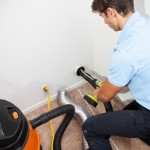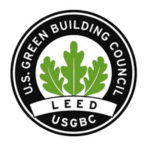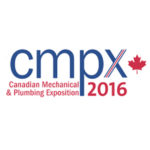 How many factors play a role in the quality of indoor air quality (IAQ)? For starters, rainscreens and wall caps that protect the building envelope, definitely improve IAQ many residential and commercial buildings by preventing mold and rot. Next on the list is a properly designed and maintained HVAC system – an essential part of a healthy office.
How many factors play a role in the quality of indoor air quality (IAQ)? For starters, rainscreens and wall caps that protect the building envelope, definitely improve IAQ many residential and commercial buildings by preventing mold and rot. Next on the list is a properly designed and maintained HVAC system – an essential part of a healthy office.
Poor IAQ in the workplace is widely regarded as a health and safety risk. In the office, it can be caused by pollutants such as volatile organic compounds (VOCs), microbial matter, dust, pollen, or emissions from outdoor traffic, furniture, carpets or paints.
The most common VOCs in the workplace are formaldehyde and benzene. Formaldehyde comes from unsealed pressboard, foam insulation, fabrics, glues, and carpet. Benzene is found in paints, glues, furniture waxes, ink in photocopiers and printers, cleaning products and in dry-cleaned clothing.
Microbial matter can come from stagnant water in the HVAC system. Emissions from traffic can be a problem in buildings that use natural ventilation and in buildings where the HVAC intake air is not sufficiently filtered.
Office occupants can have adverse reactions to these contaminants. This is commonly referred to as sick building syndrome. Symptoms of sick building syndrome include headaches, fatigue, nausea, and eye or throat irritation.
Are standards clean enough?
The main standard for IAQ is the American Society of Heating, Refrigeration, and Air Conditioning Engineers, (ASHRAE) 62-2001 Standard, which provides basic requirements for HVAC design and equipment and ventilation that will result in acceptable IAQ. Critics claim that the ASHRAE standards should be viewed as the bare minimum in air quality.
A recent Harvard study compared workers’ cognitive function after a full day of work in buildings at ASHRAE standard levels of ventilation and VOCs with a full day of work in buildings at double the ASHRAE required levels of ventilation and reduced VOCs. The cognitive function of workers was measurably higher after a day of work in a building set to higher standards than those set by ASHRAE.
What you can do about IAQ
If your customer has IAQ concerns, you can help them evaluate the source of the problem. To begin with, inspect the HVAC system to ensure that it is functioning properly and make sure that all ducts, grills, and diffusers are clean.
Next, evaluate the building. Find out if the use of the interior space has changed since it was built. An open office that has been converted to a series of smaller enclosed rooms is likely to have ventilation issues as the walls will impede ventilation.
You can test the efficacy of the ventilation by measuring carbon dioxide levels with a portable infrared analyzer. Levels above 1000 parts per million (ppm) are an indication that the amount of ventilation is low. Normal levels of carbon dioxide are 330-350 ppm. If carbon dioxide levels are high, there is a good chance that airborne contaminants are also present.
If better ventilation is required, you’ll need to adjust HVAC equipment and possibly redesign the duct system.
When planning HVAC for a retrofit or new build, there are a few special considerations for IAQ.
The air in bathrooms and kitchens should be kept at a negative pressure so that pollutants generated in these areas do not migrate to other parts of the building. Keep the air in rooms for computers at a positive pressure to discourage dust build up.
To ensure that the HVAC system does not contribute to microbial contamination, it should have sloped drain pans to reduce the amount of water that gets into the air handling system. The equipment should be accessible so it can easily be maintained and cleaned.
Maintenance of the HVAC system is critical. Make sure your customers understand that they need to change filters regularly. They should also use filters with an appropriate Minimum Efficiency Reporting Value (MERV). Commercial buildings with IAQ concerns should use MERV 13-16 filters. Higher MERV values can restrict airflow so you should ensure that the HVAC system can still function properly.



